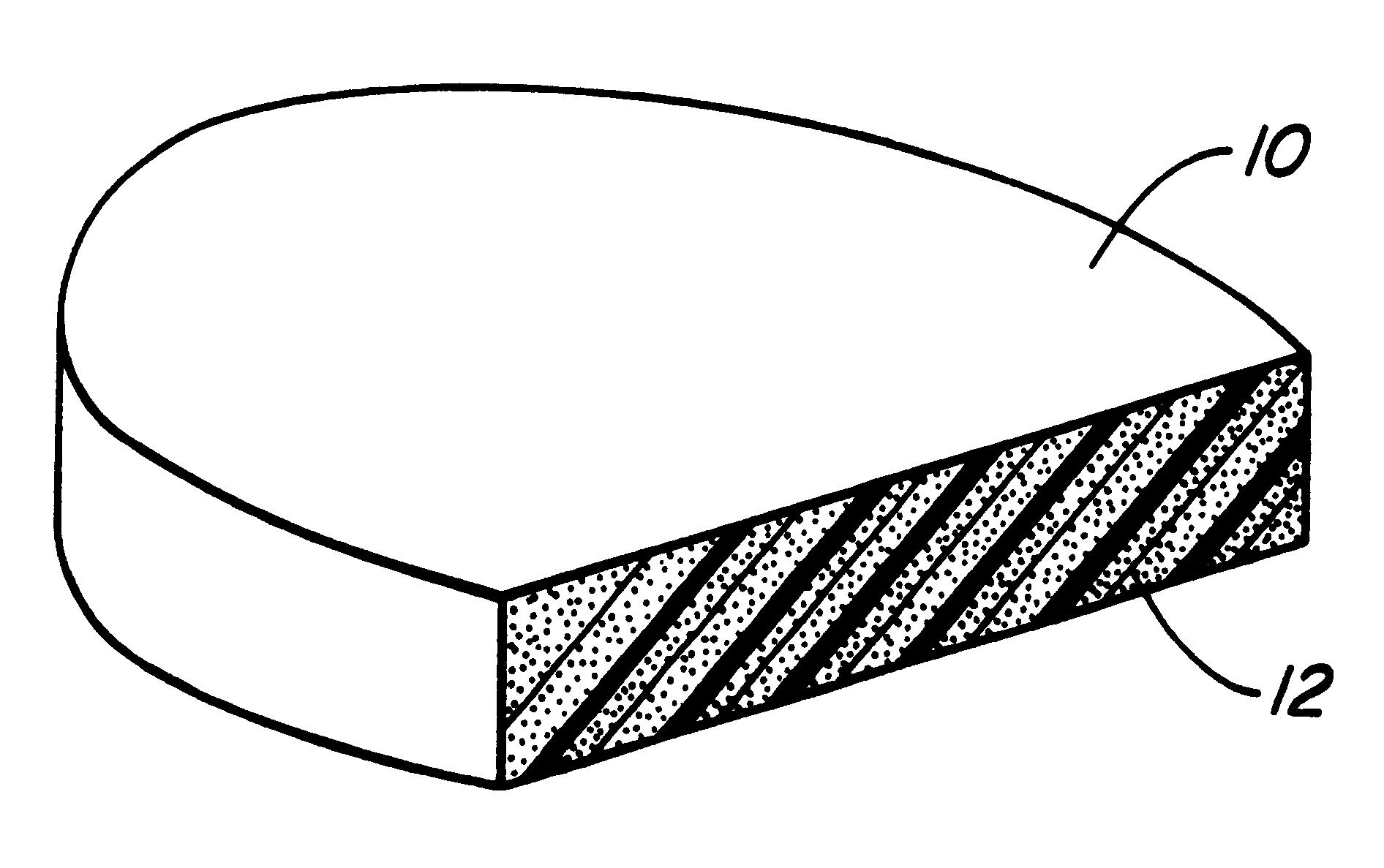Compositions and methods for intervertebral disc reformation
a technology of intervertebral discs and compositions, applied in the field of compositions and methods for intervertebral disc reformation, can solve the problems of reducing the ability of the disc to resist compressive loads, reducing the ability of the disc to resist stress, and more water loss
- Summary
- Abstract
- Description
- Claims
- Application Information
AI Technical Summary
Benefits of technology
Problems solved by technology
Method used
Image
Examples
example 1
Evacuation of Nucleus Pulposus
Mature New Zealand rabbits weighing 4-5 kg are used. For each rabbit, L4-L5 or, when possible L4-L5 and L5-L6 disc spaces are accessed as those are the biggest sections. The anesthetics Ketamine, HCl 30 mg / kg, and Xylazine 6 mg / kg, are administered intramuscularly. Using a paraspinal posterolateral splitting approach, the large cephalad-facing transverse process of the lumbar spine is identified and removed with a rongeur. The intervertebral disc can then be seen. An incision is made in the annulus fibrosus. Using a high-power surgical microscope, the nucleus pulposus tissue is scraped out carefully with a curette. The space is then packed with gel foam. The rabbit is closed provisionally.
example 2
Isolation of Intervertebral Disc Cells
Intervertebral disc tissue is obtained as described in Example 1 or from an amputated tail section. Under aseptic condition, the intervertebral disc tissue is diced with a scalpel and placed in a T25 tissue culture flask with Dulbecco's Modified Eagle Medium (DMEM) adjusted to pH 7.0, supplemented with 10% heat inactivated fetal bovine serum and 1% penicillin / streptomycin (TCM). The tissue is then treated with 0.25% collagenase for two hours at 37 .degree. C. An equal amount of TCM to collagenase is added to stop treatment. The mixture is centrifuged at 1000 r / min for 10 minutes and supernatant is discarded. TCM is added and the mixture is filtered to remove debris. The mixture is again centrifuged and supernatant discarded. Cells are resuspended in TCM supplemented with 1% hyaluronidase (400 u / ml).
example 3
Culture of Intervertebral Disc Cells
Cells are cultured in TCM supplemented with 1% hyaluronidase (400 u / ml) at 37.degree. C. in 5% CO2 / 95% air. Once cells attach medium is changed to TCM supplemented with 0.001% ascorbic acid in the absence of hyaluronidase. Cells are resuspended in fresh medium supplemented with 0.0025% ascorbic acid every 3 days.
PUM
| Property | Measurement | Unit |
|---|---|---|
| diameter | aaaaa | aaaaa |
| diameter | aaaaa | aaaaa |
| angle | aaaaa | aaaaa |
Abstract
Description
Claims
Application Information
 Login to View More
Login to View More - R&D
- Intellectual Property
- Life Sciences
- Materials
- Tech Scout
- Unparalleled Data Quality
- Higher Quality Content
- 60% Fewer Hallucinations
Browse by: Latest US Patents, China's latest patents, Technical Efficacy Thesaurus, Application Domain, Technology Topic, Popular Technical Reports.
© 2025 PatSnap. All rights reserved.Legal|Privacy policy|Modern Slavery Act Transparency Statement|Sitemap|About US| Contact US: help@patsnap.com


